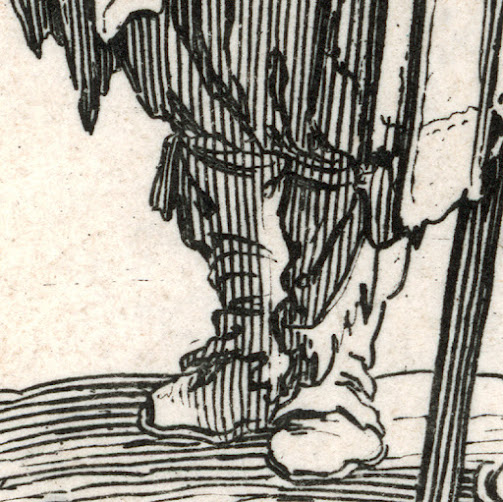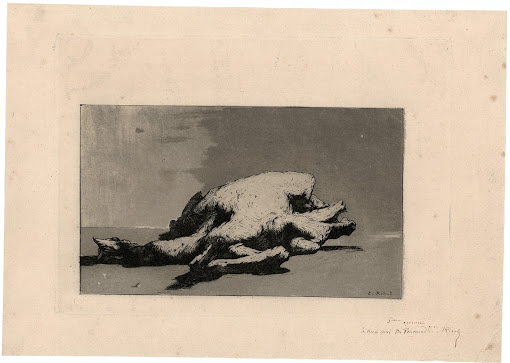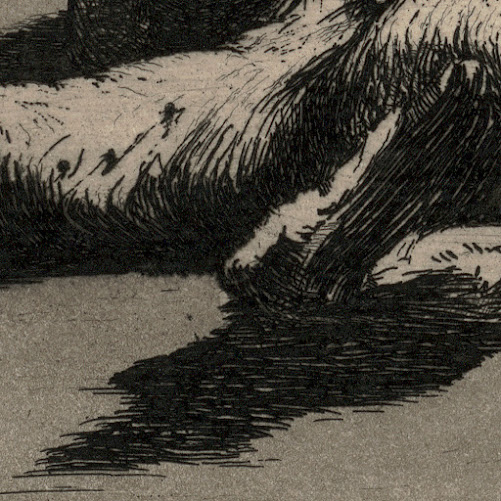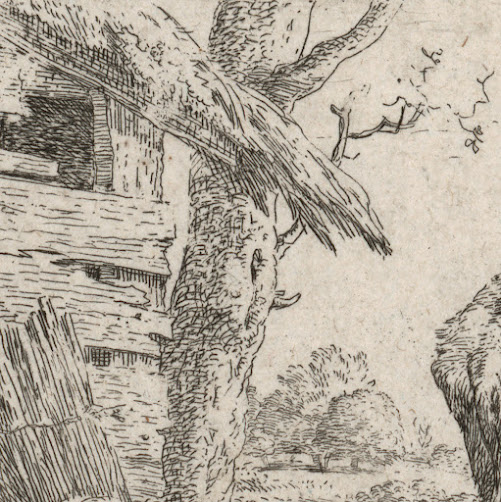Jacques Callot (1592–1635)
“The Blind Man and His Companion” (aka “L'Aveugle et Son
Compagnon”), 1622/3, first state lifetime impression (before numbering as plate
“9”) from the series of 25 etchings, “Les Gueux” (aka “The Beggars”; “Les Mendiants”;
“Les Baroni”; “Les Barons”; “Bedelaars”).
Etching on fine laid
paper trimmed along the platemark and backed with a support sheet providing
wide margins.
Size: (support sheet)
33.4 x 25.5 cm; (sheet) 14 x 9.2 cm.
State i (of ii)
before the plate number, “9”, is added in the second state.
Lieure 487 i (Jules
Lieure 1989, “Jacques Callot: Catalogue Raisonné de l’Oeuvre Gravé”, vol. 1
[text], San Francisco, Alan Wofsy Fine Arts, p. 43, cat. no. 487 1er Etat);
Meaume 693 i (Édouard Meaume 1860, “Recherches sur la vie et les ouvrages de
Jacques Callot”, Paris, cat. no. 693).
The Rijksmuseum
offers the following description of this print: “Two men dressed in rags, the
one on the left holding a hat and holding the hand of the right, who is blind.
This print is part of a series of 25 prints with beggars and vagabonds, such as
Callot probably saw in Italy” (http://hdl.handle.net/10934/RM0001.COLLECT.40788).
See also the
description of this print offered by the British Museum: https://www.britishmuseum.org/collection/object/P_1861-0713-930.
Condition: a strong
and well-printed (near faultless) impression laid onto a sheet of archival
(millennium quality) washi paper providing wide margins. The sheet is in an
excellent condition with no tears, holes, folds, abrasions or significant
stains, but a previous collector’s pencil notations on verso are visible
through the fine paper.
I am selling this superb
etching showcasing Callot’s use of the échoppe etching needle that he invented allowing
etchers to create lines that may swell, thin and taper to finely pointed ends like
those found in engraved lines, for the total cost of AU$312 (currently US$202.93/EUR206.58/GBP181.82
the time of this listing) including postage and handling to anywhere in the
world, but not (of course) any import duties/taxes imposed by some countries.
If you are interested
in purchasing this near faultless first state impression of an etching by one
of the most important and innovative of the old master printmakers, showing two
beggars with the one on the left (according to Jules Lieure's [1989] description)
singing to arouse the charity of passers-by, to whom he extends his hat while
also supporting his blind companion, please contact me
(oz_jim@printsandprinciples.com) and I will send you a PayPal invoice to make
the payment easy.
This print has been sold



















































